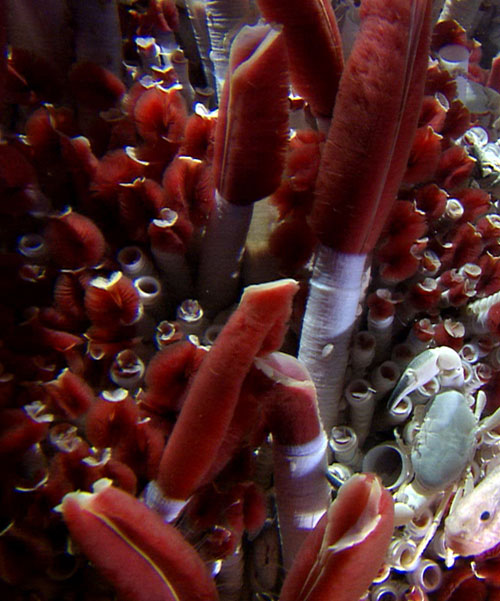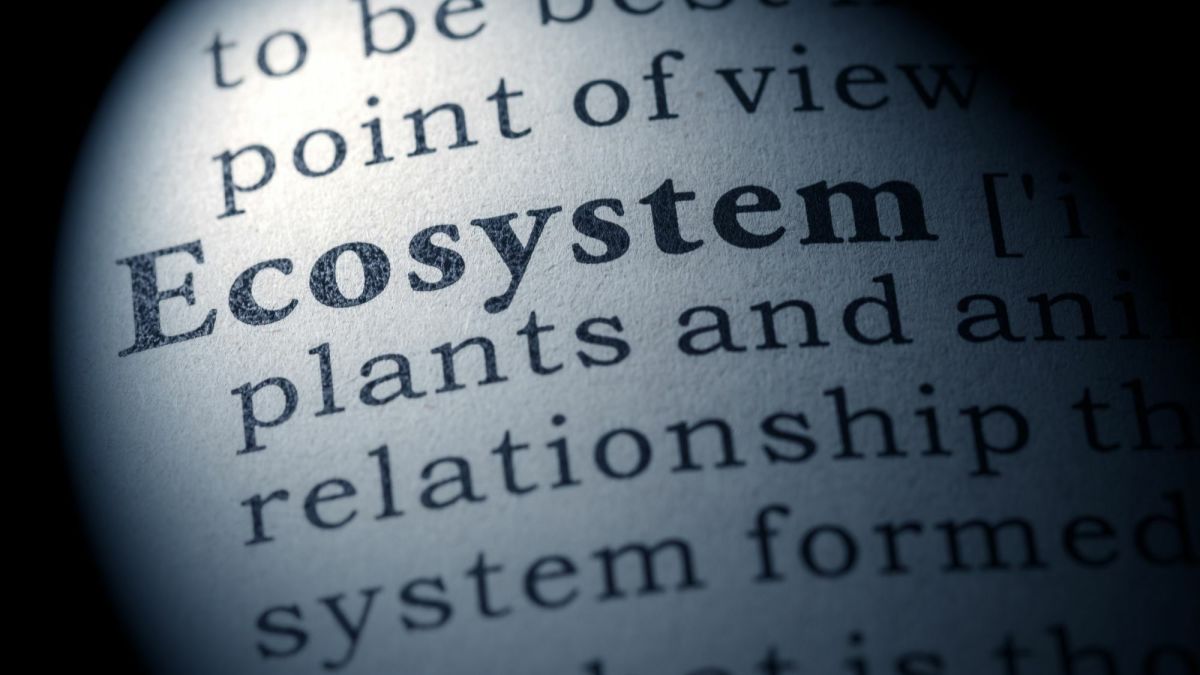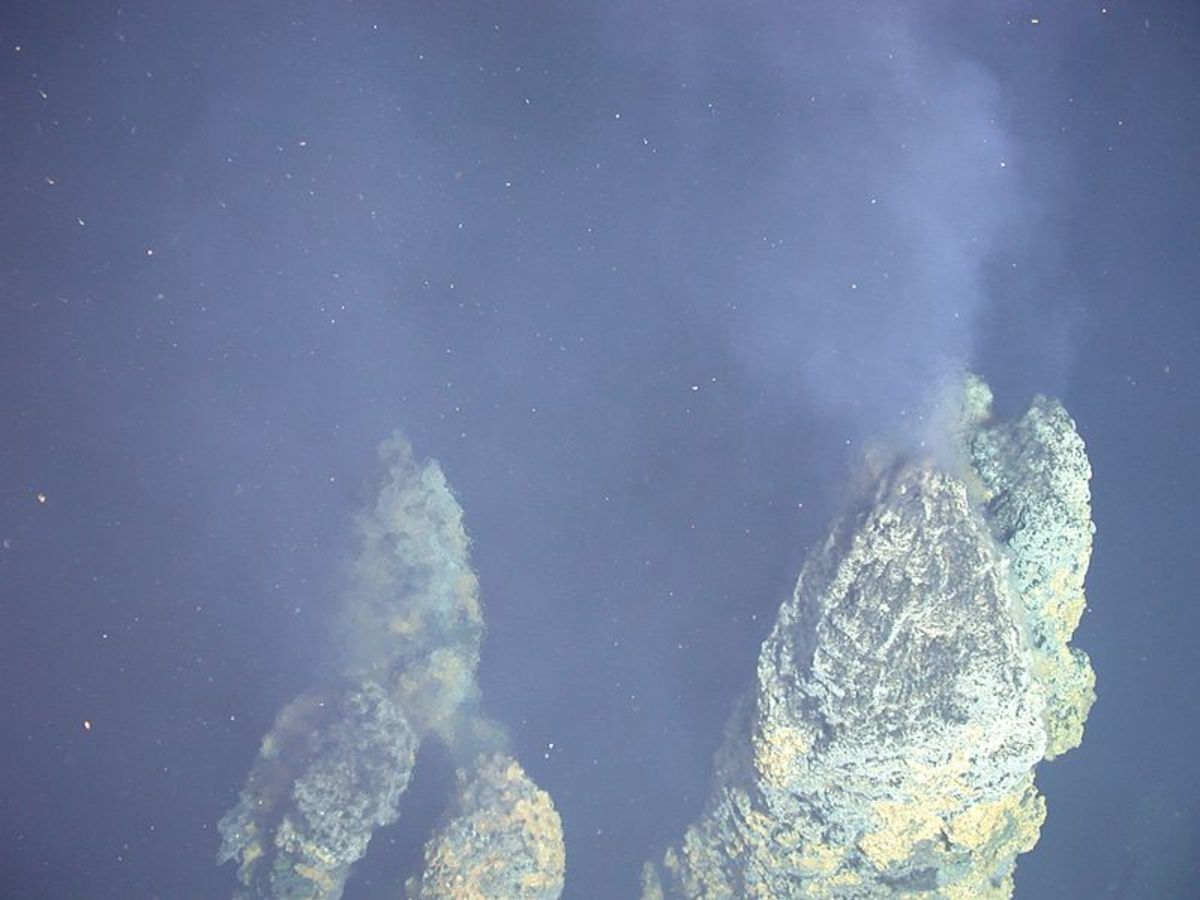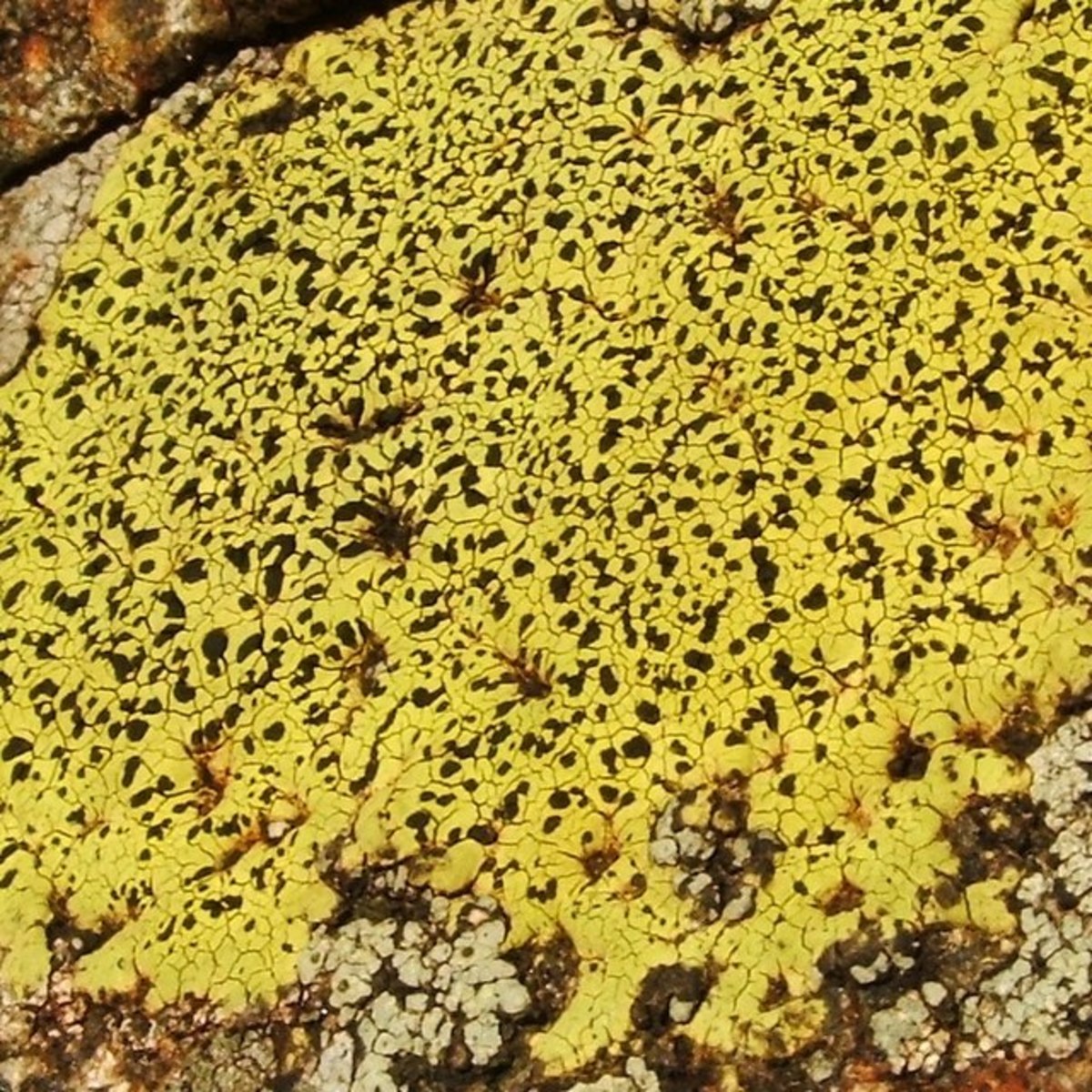Energy Pathways in Hydrothermal Vent Communities

The most fundamental differences between traditional ecosystems and hydrothermal vent communities are the specific biochemical and metabolic pathways utilized by endemic fauna to metabolize chemical compounds, and the primary energy sources exploited. The deep sea hydrothermal food web depends indirectly on the sun’s energy- no photosynthesis takes place in the aphotic zone of the ocean, and all vent sites are well below the depth at which light can penetrate (Bachraty et el 2009). Until the discovery of hydrothermal vents, sunlight was thought to be a necessary component in the propagation and support of life. Despite its photic isolation, the deep sea is not completely devoid of light. Geothermal and geochemical sources of energy illuminate the otherwise sunless environment (Van Dover & Lutz 2004). Only a small fraction (<1%) of organic material from surface waters ever reaches the floor of the open ocean, becoming available to the organisms present (Theil & Koslow 2001). Chemoautotrophic symbionts and free-living strains of bacteria produce the bulk of organic matter found in vent habitats (Pond et el 2008). Some of this organic material and microbes from vent sites are circulated upwards by hydrothermal plumes into the overlying water column, and are thought to support a wide range of biological activity. In the Northeast Pacific high concentrations of zooplankton have been observed at the upper boundary of hydrothermal plumes, suggesting that the plankton are feeding on vent material. Microbial chemosynthesis also occurs in the plume fluid, as well as in subsurface hydrothermal conduits (Glowka 2003, Theil & Koslow 2001).
The ability of organisms to obtain and metabolize nutrients in the hydrothermal environment is biologically possible due to trophic associations between chemoautotrophic microorganisms and consumers (Bachraty et el 2009). It was originally thought that vent fauna experience depressed metabolic and growth rates compared to pelagic animals. It has since been discovered that metabolic rate corresponds to mobility, not depth, so low metabolic and growth rates are not typical characteristics of vent species. Some vent species, such as the tubeworm Riftia pachyptila, have growth rates that are among the highest observed in any marine environment (Van Dover & Lutz 2004).
The specific metabolic pathways used by symbionts to break down inorganic carbon molecules vary (Fisher et el 2007). At most vent sites, hydrogen sulfide and methane are oxidized by chemoautotrophs using dissolved carbon dioxide from the surrounding seawater to synthesize complex organic compounds (Pond et el 2008). Dissolved oxygen from the seawater is also an important component of most chemoautotrophic metabolic pathways, although it is not always necessary (Theil & Koslow 2001).
Microbes act as primary producers at the base of an extensive food web that supports crustacea, polychaeats, echinoderms, coelenterates, mollusks, fish and many other types of organisms (Glowka 2003). Many heterotrophic species inhabiting areas surrounding vent openings host chemoautotrophic microorganisms as either epi- or endosymbionts that facilitate the metabolic processes necessary for the host organism to garner energy (Fisher & Girguis). Some vent animals have been found to harbor both sulfur and methane-oxidizing bacteria (Phillips 2006). Some of these symbiotic relationships are so efficient that exchange and integration of host and symbiont genes yields a symbiont that is more analogous to an organelle than an individual organism (Fisher & Girguis 2007).
Some organisms at vent sites do not rely primarily on symbionts for energy. Biofilms and filamentous mats develop on both mineral and biological surfaces and provide a food source for filter feeders (Theil & Koslow 2001). Vestimentiferan and Siboglinid tubeworms only rely on symbioses for part of their life cycle. The larvae of these animals are symbiont-free and possess a transient digestive tract that is lost during development. Each new generation is colonized de novo by its specific bacterial symbiont (Nussbaumer et el 2006).
Thanks for Reading! Literature Consulted:
Bachraty, C., P. Legendre and D. Desbruyeres. “Biogeographic Relationships Among Deep-Sea Hydrothermal Vent Fauna at Global Scale.” Deep Sea Research . 56 (2009): 1371-1378.
Fisher, C. and P. Girguis. “A Proteomic Snapshot of Life at a Vent.” Science . 315 (2007): 198-199.
Fisher, C., K. Takai, and N. Le Bris. “Hydrothermal Vent Ecosystems.” Oceanography . 20.1 (2007): 14-23.
Glowka, L. “Putting Marine Scientific Research on a Sustainable Footing at Hydrothermal Vents.” Marine Policy . 27.4 (2003): 303-312.
Nussbaumer, A., C. Fisher and M. Bright. “Horizontal Endosymbiont Transmission in Hydrothermal Vent Tubeworms.” Nature . 441 (2006): 345-348.
Pond, D., A. Fallick, C. Stevens, D. Morrison, and D. Dixon. “Vertebrate Nutrition in a Deep-Sea Hydrothermal Vent Ecosystem: Fatty Acid and Stable Isotope Evidence.” Deep Sea Research . 55 (2008): 1718- 1726.
Thiel, H. and A. Koslow, eds. Managing Risks to Biodiversity and the Environment on the High Sea, Including Tools Such as Marine Protected Areas- Scientific Requirements and Legal Aspects . 27 Feb 2001, Isle of Vilm, Germany. German Federal Agency for Nature Conservation, 2001. Print.
Van Dover, C. and R. Lutz. “Experimental Ecology at Deep-Sea Hydrothermal Vents: A Perspective.” Journal of Experimental Marine Biology and Ecology . 300 (2004): 273-307.









